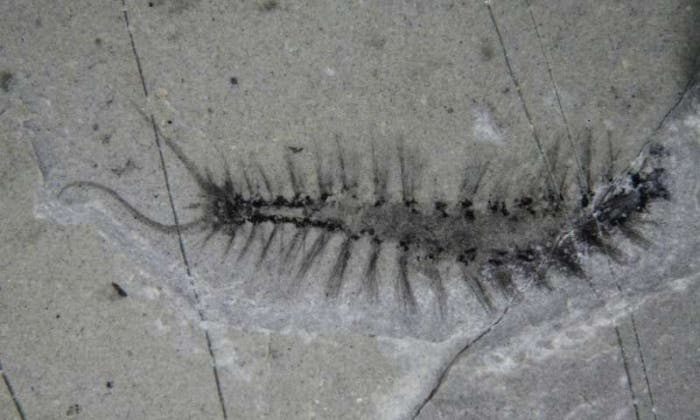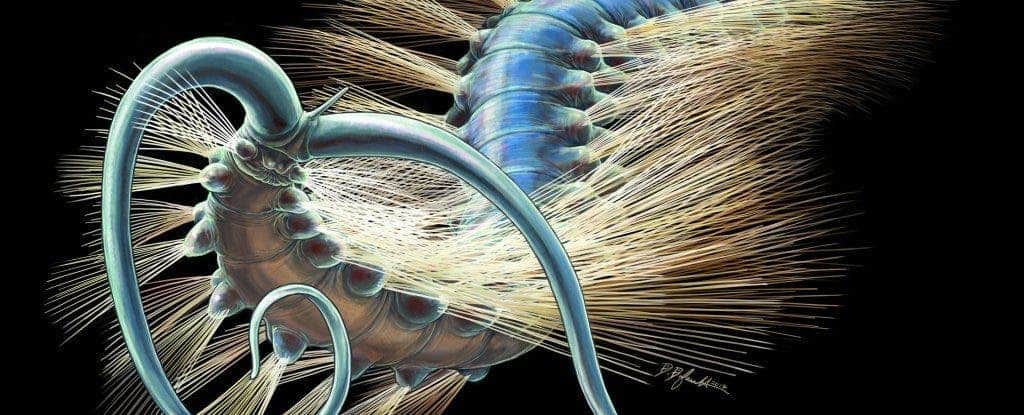A new study based on recent findings might shed a new light on annelids (ringed worms). Researchers now have solid evidence that these animals developed heads more than 500 million years ago. An extremely well-preserved fossil also suggests how the head evolved in the first place.

We take some of our biological features — such as the head — for granted. But five hundred million years ago, things were much more unfamiliar. Not only was the planet a completely different place, with different landscapes and atmospheric conditions, but heads were a scarce commodity. It’s not clear exactly when creatures started to evolve heads — areas of the body with concentrated sensorial functions — but some of the earliest evidence we have comes from 500 million years ago, during a period called the Cambrian.
Now, paleontologists working in Canada have found an intriguing Cambrian fossil which sheds new light on how annelids developed heads.
The fossil was found in the 508-million-year-old Marble Canyon site in the Burgess Shale in British Columbia. Burgess Shale is one of the best places for Cambrian fossils, with a long list of intriguing finds that enables us to better understand how life evolved. Now, we can add a new entry to that list: Kootenayscolex.
“508 million years ago, the Marble Canyon would have been teeming with annelids,” said Karma Nanglu, a University of Toronto PhD candidate, and a researcher at the Royal Ontario Museum, as well as the study’s lead author. “The fine anatomical details preserved in Kootenayscolex allow us to infer not only its evolutionary position, but also its lifestyle. Sediment preserved inside their guts suggest that, much as their relatives do in modern ecosystems, these worms served an important role in the food chain by recycling organic material from the sediment back to other animals that preyed on them.”
Kootenayscolex barbarensis, as its full name goes, had paired bundles of hair-sized bristles spread along the body, which allows paleontologists to positively identify it as an annelid. But unlike any other discovered fossil, these bristles were partially covering the head — specifically, the mouth. This seems to support the theory that the head evolved from posterior body segments, something which was also suggested by research on modern species.

However, fossil evidence is extremely scarce. Since annelids are invertebrates (Kootenayscolex actually emerged as one of the first annelids), preservation of their soft bodies is extremely rare. The very process of fossilization favors the preservation of bones and other hard body parts, which makes this finding even more valuable: not only is it a rare occurrence of a preserved soft body, but it’s also caught in an important moment of its evolutionary history.
With over 17,000 extant species including ragworms, earthworms, and leeches, annelids are one of the most diverse groups on Earth. They can thrive in a variety of environments, from marine environments as distinct as tidal zones and hydrothermal vents to freshwater lakes and moist terrestrial environments. Wherever there’s some form of humidity, there’s a good chance to find an annelid. This diversity makes them an extremely interesting and important group to study, but it also makes it extremely difficult to look at the broad picture.
“Annelids are a hugely diverse group of animals in both their anatomies and lifestyles,” added Nanglu. “While this diversity makes them ecologically important and an evolutionarily interesting group to study, it also makes it difficult to piece together what the ancestral annelid may have looked like.”
The team’s research is due to be published in the journal Current Biology.






